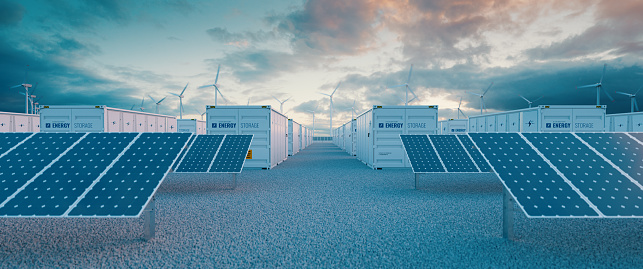
Technological advancements play a crucial role in shaping the landscape of energy storage systems (ESS), particularly in the domain of ESS batteries. As the demand for efficient and sustainable energy solutions grows, continuous innovation in ESS batteries becomes imperative. This article explores the remarkable technological advances driving the evolution of ESS batteries, and their potential to reshape the energy industry.
Overview of ESS Batteries
ESS batteries are vital components of modern energy systems, facilitating renewable energy integration, grid stabilization, and backup power. They offer numerous benefits, such as enhanced grid reliability, improved energy management, and reduced carbon emissions. However, to unlock the full potential of ESS batteries, ongoing technological advancements are essential.
Current Technological Advancements
A. Lithium-Ion Battery Innovations
Lithium-ion batteries have been at the forefront of ESS battery technology, and recent advancements have further enhanced their performance. Innovations in battery chemistry and design have led to increased energy density, extended cycle life, and improved safety features. Furthermore, emerging technologies like solid-state and lithium-sulfur batteries show great promise for the future.
B. Alternative Battery Technologies
While lithium-ion batteries dominate the ESS market, alternative battery technologies are gaining attention. Flow batteries, zinc-air batteries, and sodium-ion batteries offer unique advantages and are being explored for specific applications. Understanding their strengths and limitations is crucial to diversifying the ESS battery landscape.
C. Battery Management Systems (BMS)
Battery Management Systems (BMS) are essential for optimizing the performance of ESS batteries. Advancements in BMS technology, including advanced algorithms and predictive analytics, enable efficient energy storage system operation. Intelligent BMS ensures optimal charging and discharging, safeguards battery health, and enables effective integration with the grid.
Breakthrough Research and Development
A. Cutting-Edge Materials
Ongoing research in electrode materials and electrolytes is instrumental in improving ESS battery performance. Novel materials with high energy density, faster charging capabilities, and increased stability are being developed. These materials have the potential to revolutionize ESS batteries and pave the way for next-generation energy storage technologies.
B. Next-Generation Technologies
Beyond incremental improvements, next-generation battery technologies are being explored. Solid-state batteries, metal-air batteries, and hybrid systems hold promise for higher energy density, longer cycle life, and improved safety. These advancements could reshape the ESS battery landscape and enable a sustainable and resilient energy future.
C. Collaborative Research Efforts
The advancement of ESS battery technology relies on collaborative efforts between academia, industry, and government. Collaborative research initiatives foster innovation, accelerate discoveries, and facilitate the commercialization of new technologies. Examples of successful partnerships highlight the significance of collaboration in driving ESS battery technology forward.
Implications and Future Outlook
Technological advances in ESS batteries have significant implications across various sectors. These advancements enable greater integration of renewable energy sources, enhance the adoption of electric vehicles, and support grid stability. Policy support, funding, and regulatory frameworks will play a critical role in ensuring a favorable environment for further technological advancements.
Conclusion
Technological advances are propelling the evolution of ESS batteries, revolutionizing the energy landscape. With ongoing research, breakthrough materials, and next-generation technologies, ESS batteries are becoming more efficient, sustainable, and economically viable. Embracing these advancements will be instrumental in achieving a clean and resilient energy future.
As lithium-ion batteries continue to dominate the market, significant progress has been made in improving their energy density, cycle life, and safety features. Moreover, alternative battery technologies, such as flow batteries, zinc-air batteries, and sodium-ion batteries, offer exciting prospects for specific applications and diversification of ESS batteries.
Battery management systems (BMS) have also witnessed remarkable advancements, enabling intelligent control and optimization of ESS battery performance. With advanced algorithms and predictive analytics, BMS ensures efficient energy storage system operation, maximizing the benefits of ESS batteries.
Breakthrough research and development in materials science hold immense potential for further enhancing ESS battery performance. Cutting-edge materials with higher energy density, faster charging capabilities, and improved stability are being developed, paving the way for more powerful and reliable ESS batteries. Additionally, next-generation technologies like solid-state batteries, metal-air batteries, and hybrid systems offer the promise of even greater advancements in energy storage.
Collaborative research efforts between academia, industry, and government are vital in driving the progress of ESS battery technology. By sharing knowledge, resources, and expertise, collaborative initiatives accelerate discoveries and facilitate the transition of research findings into practical applications. These partnerships are crucial for achieving widespread adoption and commercialization of emerging ESS battery technologies.
The implications of technological advances in ESS batteries extend beyond the energy sector. Integration of renewable energy sources, such as solar and wind power, is made more feasible and efficient with improved energy storage capabilities. Electric vehicles can benefit from advancements in ESS batteries, enabling longer ranges and faster charging times. Furthermore, ESS batteries play a crucial role in maintaining grid stability, facilitating the integration of intermittent renewable energy sources into the power grid.
To fully realize the potential of technological advances in ESS batteries, policy support, funding, and regulatory frameworks are essential. Governments and regulatory bodies must create an enabling environment that encourages research and development, incentivizes innovation, and promotes the deployment of advanced energy storage solutions. Continued investments in ESS battery technology will contribute to a cleaner, more reliable, and sustainable energy future.
In conclusion, technological advances are reshaping the landscape of ESS batteries, driving the transition to a more sustainable and resilient energy system. With ongoing innovations in battery chemistry, alternative battery technologies, battery management systems, breakthrough materials, and collaborative research efforts, ESS batteries are becoming increasingly efficient, reliable, and cost-effective. Embracing these advancements will not only pave the way for a cleaner and greener future but also unlock new opportunities for economic growth and energy security. By harnessing the power of technological advances, we can power the future with sustainable energy storage solutions.




